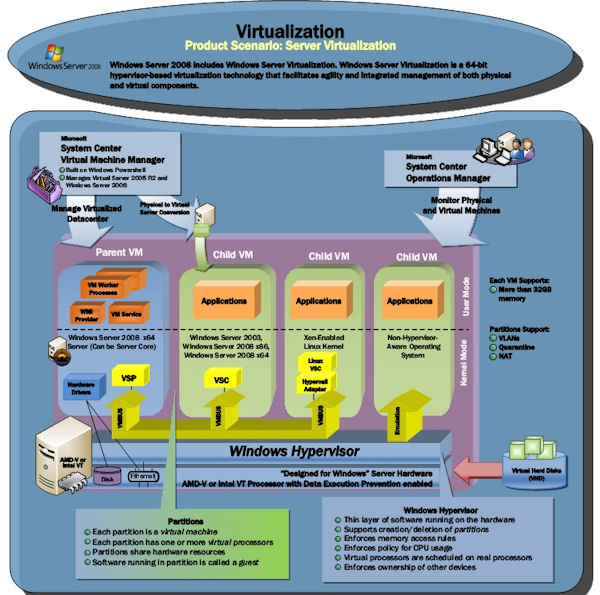What is Virtualization?
Overview
– Virtualization is a concept and practice that has been in use in enterprise computing for nearly 50 years. Only recently have the concepts been adapted from enterprise mainframe supercomputers to the more common hardware in use in the Internet industry today. As a result, virtualization is now a proven software technology that is rapidly transforming the IT landscape and fundamentally changing the way that people compute.Today’s powerful server hardware was originally designed to run only a single operating system and a single application, but virtualization breaks that bond, making it possible to run multiple operating systems and multiple applications on the same server at the same time, increasing the utilization and flexibility of hardware while minimizing overhead and related costs.
Virtualization is a technology that can benefit anyone who uses a server, from IT professionals and computing enthusiasts to commercial businesses and government organizations.
How Does Virtualization Work?
– In essence, virtualization transforms server hardware into software. Using software to transform, or “virtualize” the hardware resources of a server—including the CPU, RAM, hard disk and network controller—to create fully functional virtual machines that can run their own operating systems and applications.Multiple virtual machines share hardware resources without interfering with each other so several operating systems and applications can run at the same time on a single server. This reduces the amount of hardware, power and storage space required to run multiple servers by a substantial percentage, which in turn reduces costs.
Virtualization is a technology that can benefit anyone who uses a server, from IT professionals and computing enthusiasts to commercial businesses and government organizations.



